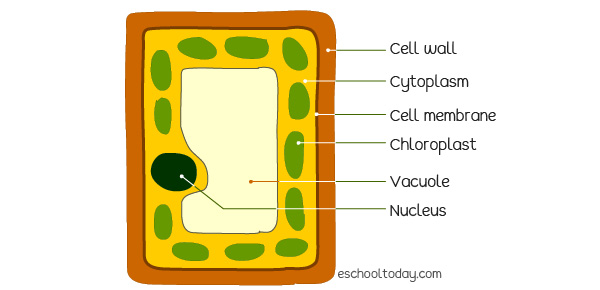- Photosynthesis
Where does photosynthesis take place?
Photosynthesis takes place inside plant cells in small things called chloroplasts. Chloroplasts (mostly found in the mesophyll layer) contain a green substance called chlorophyll. Below are the other parts of the cell that work with the chloroplast to make photosynthesis happen.
Structure of a mesophyll cell

What role do these parts play?
- Cell walls provide structural and mechanical support, protect cells against pathogens, maintain and determine cell shape, control the rate and direction of growth, and generally provide the form to the plant.
- Cytoplasm provides the platform for most chemical processes, controlled by enzymes.
- The cell membrane acts as a barrier, controlling the movement of substances into and out of the cell.
- Chloroplasts, as described above, contain chlorophyll, a green substance that absorbs light energy for photosynthesis.
- The vacuole is the container that holds moisture and keeps the plant turgid.
- The nucleus contains genetic make (the DNA), which controls the activities of the cell.
Chlorophyll absorbs the light energy needed to make photosynthesis happen. It is important to note that not all the color wavelengths of light are absorbed. Plants mostly absorb red and blue wavelengths — they do not absorb light from the green range.
